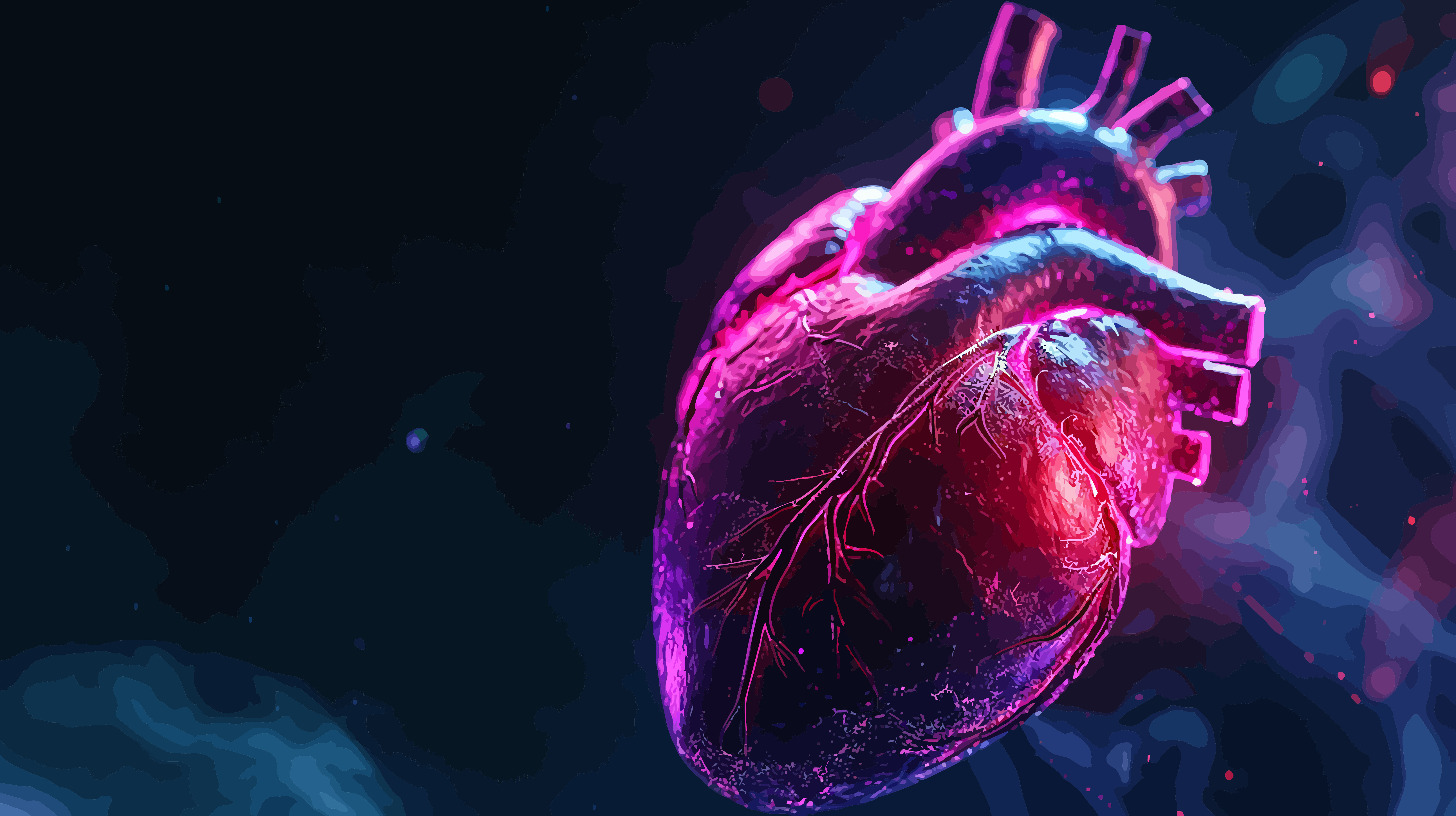3D-Printed Organs: Are We Close?

Currently, 3D-printing organs — the process of additively manufacturing living human tissues — is secluded to research labs in clinical trials. But that’s not to say bioprinted human transplants can’t be done.
In fact, it’s technically old news. The first 3D-printed organ that was transplanted into a human was a bladder in 1999 by scientists at the Wake Forest Institute for Regenerative Medicine. And it’s still fully functioning more than a couple of decades later.
Other medical milestones — like a woman receiving the world’s first 3D-printed ear implant, or the mobile bioprinters that can print skin directly onto a wound from a patient’s bedside — have made their mark.
What’s got researchers excited about 3D-printed organs these days, though, are so-called organoids. Nicknamed “mini-organs,” these are small-scale, functional replicas of naturally occurring body parts made up of self-organizing cells that are produced in vitro. Today, brains, kidneys and hearts have all been duplicated in petri dishes. The idea is that, one day, we’ll be able to scale them up to regular size and print viable donors on demand.
As for what’s being implanted in humans already, 3DBio Therapeutics’ clinical trial is building ear prosthetics out of the patient’s own cells. The study (currently the only one of its kind) is a promising step for hollow bioprinted structures — like skin, cartilage and bladders — with simple geometry and architecture.
“The ongoing clinical trial will be very helpful to understand what are the different tests that need to be done for new therapies, as there is still no clear regulatory pathway established yet,” said Didarul Bhuiyan, a biomaterial and tissue engineering scientist at West Pharmaceutical Services.
Printing an ear isn’t the same thing as printing a lung or a heart though. Bhuiyan said we are “far away” from transplanting complex, life-sized 3D-printed organs into humans, and the general consensus sees this as a reality in about 20 to 30 years.
Below we cover how 3D-printed organs work, what they’re made from, their benefits as well as their drawbacks, and what the future holds.
What Are 3D-Printed Organs Made of?
In short, 3D-printed organs are made out of a cellular mixture known as bio-ink. Typically bio-ink consists of cultured cells that are paired with biopolymer hydrogels, like gelatin or alginate, which help construct structures, or scaffold, of an organ and protect living cells during the printing process.
Niina Matthews, a PhD Candidate working out of the Gentile Lab at University of Technology Sydney, explained it like this: Think of a 3D bioprinter as an inkjet printer and bio-ink as the ink inside of a cartridge. Instead of each cartridge being able to produce a different color, though, they extrude biomaterials that can replicate different organs.
When creating a bio-ink, researchers must first consider which organ they are trying to artificially replicate. From there, scientists harvest stem cells, or “blank” cells without any specialized function, from the patient. Through a process known as cell differentiation, these cells become specialized to carry out a specific function.
“Since all the organs in the body consist of several cell and tissue types, a specific bio-ink must be developed to suit their exact requirements,” Matthews explained. “Cells organize into different types of tissues, and when tissues are assembled together, the end result is an organ.”
Benefits of 3D-Printed Organs
Ability to Customize Organs Specific to Patients
3D-printed organs are constructed out of stem cells taken from the patient. Through a process known as cell differentiation, these cells are instructed to carry out very specific tasks in the body, which enables researchers to deliver organ-specific and patient-specific treatments faster and at scale.
No Need to Wait for Organ Donation
Every day, 17 people die waiting for an organ transplant. And every ten minutes, another candidate is added to the waiting list. If 3D bioprinting were available en masse, in theory, access to these in-demand organs would be a matter of hours, days or a few weeks versus the current reality of spending years on standby.
Reduced Organ Rejection
Since 3D-printed organs are sourced from the patient’s own DNA, the likelihood for a patient’s immune system to recognize a 3D-printed organ as its own rather than a foreign object would theoretically increase. This would result in significantly less cases of organ rejection.
Lower Healthcare Costs
The average cost for a kidney transplant (one of the more common transplant procedures), lands at about $442,500 before insurance kicks in. For surgeries that require a longer hospital stay, like hearts, charges skyrocket to $1.6 million. Meanwhile, professional-grade bioprinters used to generate 3D-printed organs and live human tissues are available on the commercial market for as low as $25,000. While this does not include operating and hospital room and board costs, experts still think this could be a cost-effective alternative to the current system.
Less Animal Testing
Medications, therapies and procedures are commonly tested for safety and effectiveness on animals before they can make it to market, due to similarities found between our DNA. Enter bioprinting: the perfect simulation of human tissues engineered from human cells. In 2015, cosmetics conglomerate L’oreal partnered with San Diego-based bioprinting startup Organovo to 3D-print skin sample swatches used to test their products. The company has actually been farming derma since the 1980s — producing 100,000-skin samples per year — and claims on their website to have completely given up on animal testing altogether.
Challenges of 3D-Printed Organs
Cell Damage During Production
Cells undergo a considerable amount of stress during the 3D-printing process — from undersized nozzles to highly pressurized, nutrient-deficient environments. Poor conditions may result in cell damage or even cell death, and can compromise the overall functionality of the artificial organ. Keeping living cells alive becomes even more of a challenge when building structures at scale, as more resources are required to “feed” a living organism.
Low-Quality Printers
3D printing was originally invented to fabricate plastic and metal parts for the sake of rapid prototyping. In this way, bioprinting has always been a matter of reverse engineering, repurposing the tech to create objects out of human tissue. Today’s machines lack the ability to print at both high resolution and ideal viscosity to recreate complex structures that can hold their shape.
Limited Availability of Biomaterials
One reason why traditional tissue engineering has yet to fully reproduce biomimetic tissues is due to the lack of biomaterials available. While researchers find workarounds using different techniques, researchers note that there is only a limited number of bio-inks that fulfill the physicochemical requirements to successfully survive the 3D-printing process. Most recently, hydrogel additives have fostered more biocompatible, printable and mechanically viable feedstocks.
Can 3D-Printed Organs Be Rejected?
Yes — and that has more to do with the body’s natural immune response than the technology itself. The main reason why about 10 to 30 percent of transplant patients experience organ rejection is because their immune system mistakes the transplanted organ as a foreign body, and attacks it. Despite immunosuppressive medications, this bodily phenomenon remains a threat — whether the organ comes 3D-printed or not.
The hope, however, is that bioprinting organs that are tailor-made from the patient’s own cells may greatly reduce this risk.
“3D bioprinting offers a potential solution to the problem of transplant rejection,” said Matthews, who is currently studying how to biofabricate cardiac patches to treat heart failure. “Since the transplant wouldn’t look like a foreign body to the immune system, it would not trigger a rejection response.”
The Future of 3D-Printed Organs
There is still a lot of ground to cover in the bioprinted corner of health tech before donors become obsolete. And it starts with better hardware.
Manufacturing 3D bioprinters that can incorporate several bio-inks in a single print design is imperative to the next wave of 3D-printed treatments, Matthews said. They need to perform faster and at higher resolutions. Only then can bio-inks level up. Improved printability and durability means precise patterns that can better maintain their structure over time. One study described the advancements in both bioprinters and the software behind it as an “inevitable trend” to come.
The next major breakthrough in bioprinting will likely involve generating microscopic vascular networks built into the artificial organs as they print, according to Ryan Creek, a certified physician associate researching regenerative medicine at biotech startups. This needle-moving development would allow 3D-printed organs to establish circulation via tiny blood vessels, allowing them to transport nutrients, blood cells, oxygen and waste products on their own.
So while there are several boundary conditions boxing researchers into operating on a smaller, organoid scale, one of the main obstacles is connecting these mini-organs to a sufficient blood supply, such as that found in the human body, before its cells die off.
“It’s not a significant leap to scale [organoids] up to larger sizes,” Creek said, “But as the organoid gets larger, we reach a point where these structures can no longer survive off of the simple diffusion of nutrients.”
All of these technical difficulties are small hurdles along the way to a much bigger goal — treating the 104,000 applicants on the national transplant list.
“Many patients die before they can get an organ transplant,” Creek said. “A new organ generated from the patient’s own cells would be a game changer.”
Are 3D-printed organs available?
No, 3D-printed organs are not yet available to the general public. Currently, there is one clinical trial approved for human transplantation.
How much do 3D-printed organs cost?
This is not yet determined; however, professional-grade bioprinters range anywhere from $25,000 to $300,000, at the time of writing.
What is the easiest organ to 3D print?
Hollow structures with simple geometry, like skin, cartilage and bladders, are the easiest organs to 3D print.
link






